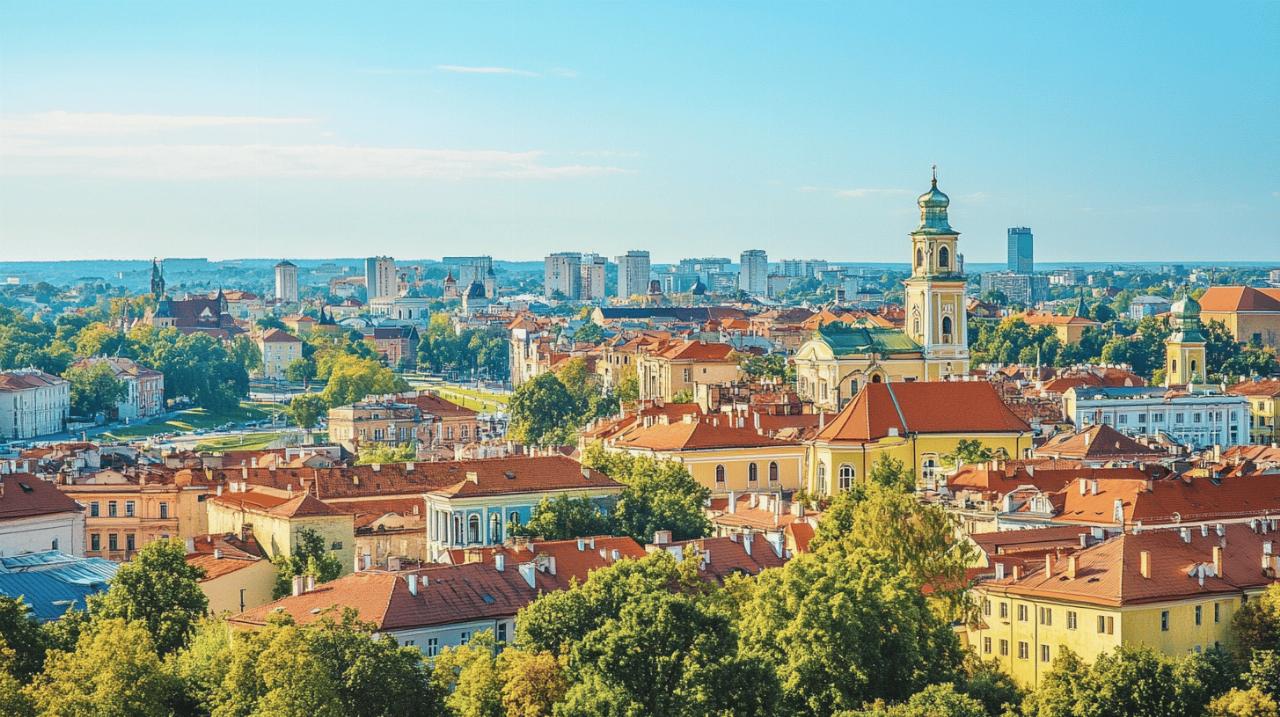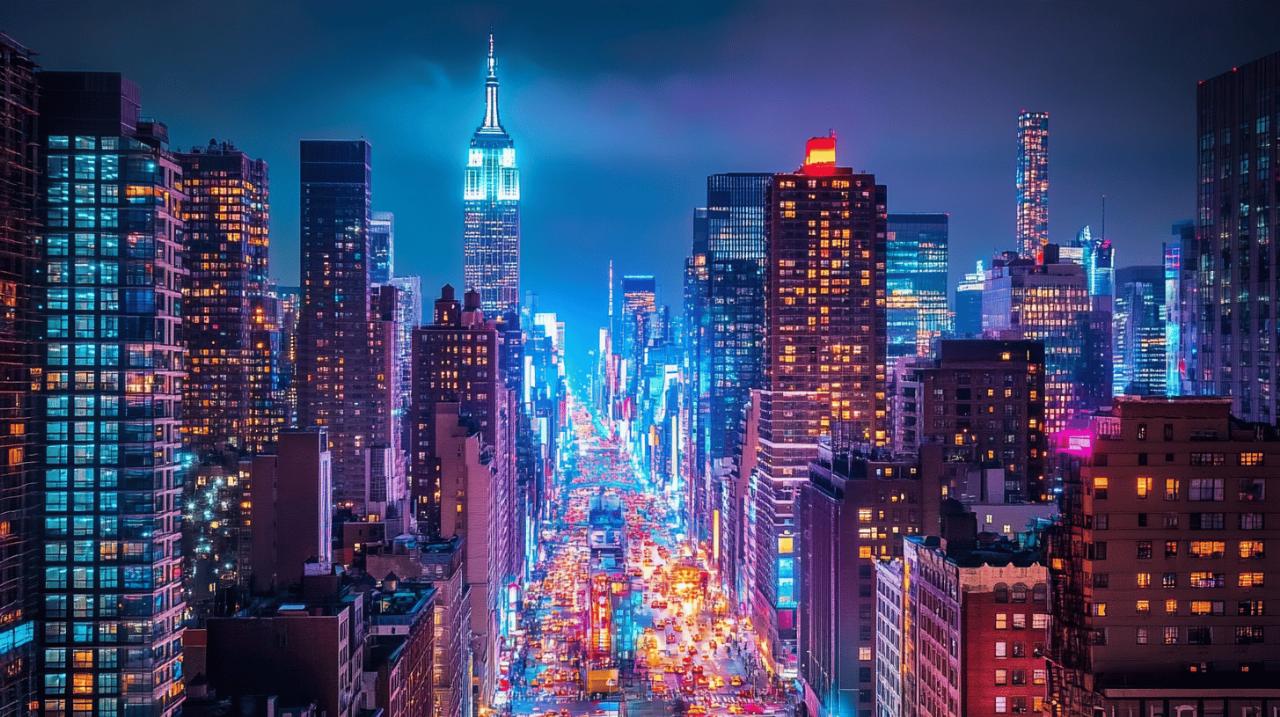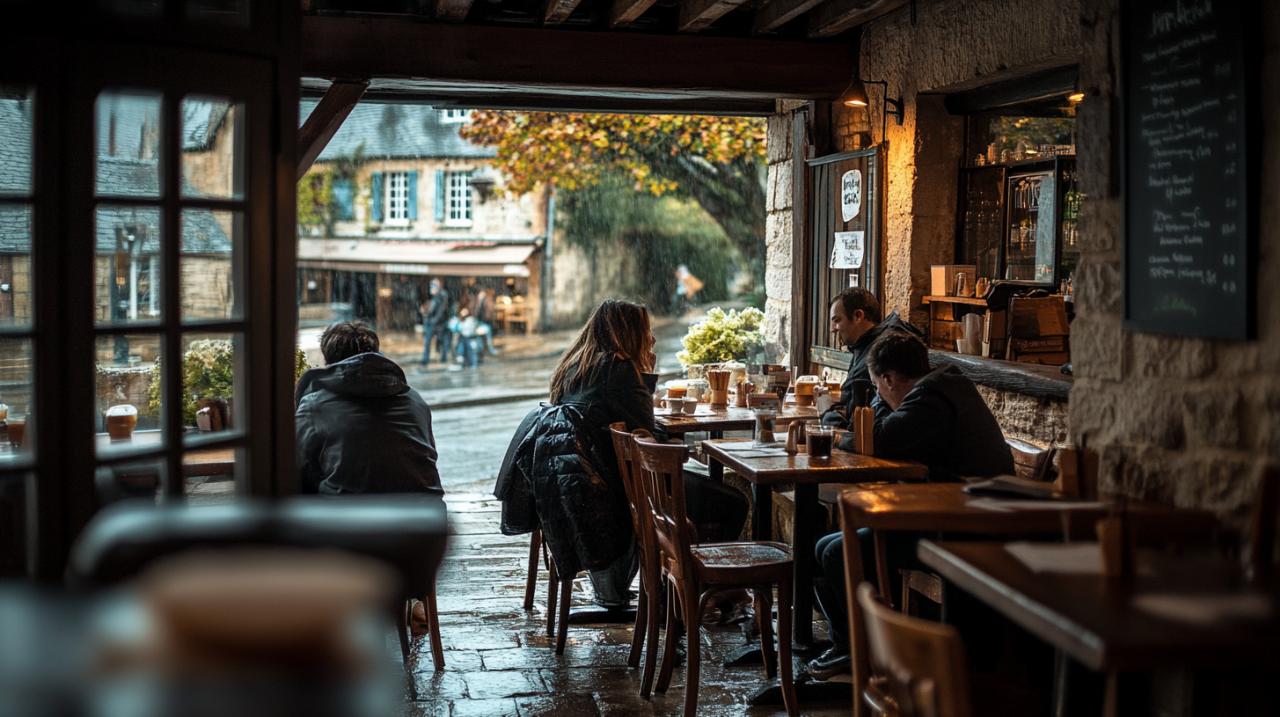Vilnius, the vibrant capital of Lithuania, beckons travellers with its unique blend of historical charm and abundant green spaces. As the city prepares to become the European Green Capital in 2025, there has never been a better time for nature enthusiasts to explore this compact yet captivating destination. Whether you are drawn to sprawling parks, tranquil riverside trails, or urban gardens that celebrate sustainability, Vilnius offers an unforgettable experience that seamlessly combines cultural discovery with the serenity of the outdoors. Over three days, this carefully crafted itinerary will guide you through the greenest corners of the Lithuanian capital, revealing hidden natural gems and inviting you to embrace the peaceful rhythm of a city that truly values its natural heritage.
Day one: exploring vilnius' historic green spaces and parks
Morning stroll through bernardine gardens and vingis park
Begin your first day in Vilnius with a leisurely walk through the Bernardine Gardens, a picturesque park that sits at the foot of the historic Old Town. This verdant oasis offers shaded pathways lined with centuries-old trees, flower beds that burst into colour during the warmer months, and the gentle murmur of fountains that invite you to pause and reflect. The Bernardine Gardens provide a perfect introduction to the city's commitment to preserving natural beauty within its urban landscape. As you wander through this serene space, you will notice locals enjoying morning jogs or simply sitting on benches with a coffee, embodying the relaxed pace of life that characterises Vilnius. The proximity of the gardens to landmarks such as St. Anne's Church, with its striking Gothic architecture, allows you to appreciate both the cultural and natural richness that define the city. After soaking in the tranquil atmosphere of the Bernardine Gardens, make your way to Vingis Park, one of the largest green spaces in Vilnius. Spanning more than one hundred hectares, this expansive park is beloved by residents and visitors alike for its wide open meadows, shaded trails, and the meandering presence of the Neris River. Vingis Park is an ideal location for a morning walk, offering routes that cater to all fitness levels and providing ample opportunities to observe local birdlife and seasonal wildflowers. The park's open-air amphitheatre, which hosts concerts and cultural events during the summer months, adds a lively dimension to the natural setting. As you explore the winding paths, you will understand why Vingis Park is considered the green heart of the city, a place where nature and community converge in harmonious balance.
Afternoon Discovery of Pavilniai Regional Park and Nature Trails
After a refreshing morning immersed in the greenery of central Vilnius, dedicate your afternoon to Pavilniai Regional Park, a remarkable natural reserve located just a short distance from the city centre. Pavilniai is often described as a hidden gem, offering a more rugged and varied landscape compared to the manicured parks you encountered earlier in the day. The park encompasses dense forests, rolling hills, and several well-marked nature trails that invite exploration on foot or by bicycle. One of the highlights of Pavilniai is the winding course of the Vilnelė River, which carves through the landscape and creates a series of picturesque valleys and cascades. The sound of water flowing over rocks and the rustling of leaves underfoot create a sensory experience that is both invigorating and calming. As you follow the trails deeper into the park, you will encounter viewpoints that offer sweeping vistas of the surrounding woodland and the distant skyline of Vilnius. These vantage points are particularly enchanting during the golden hours of late afternoon, when sunlight filters through the canopy and casts a warm glow over the terrain. Pavilniai Regional Park is also home to a variety of wildlife, including deer, foxes, and numerous bird species, making it a rewarding destination for nature enthusiasts who appreciate biodiversity. The park's trails range from easy walks suitable for families to more challenging routes that lead to secluded spots where you can truly disconnect from the hustle of urban life. Before heading back to the city, take a moment to rest beside the river or at one of the designated picnic areas, reflecting on the natural beauty that Vilnius so generously offers to those who seek it out.
Day Two: Immersing Yourself in Vilnius' Natural Landscapes and Outdoor Activities
Cycling Adventures Along the Neris River and Green Corridors
On your second day, embrace the spirit of active exploration by embarking on a cycling adventure along the Neris River, which gracefully flows through Vilnius and serves as a natural artery connecting various green spaces. Renting a bicycle in the city is both affordable and convenient, with several rental points offering bikes for around three euros per hour. The riverside cycling paths are well-maintained and provide a safe and scenic route that allows you to cover more ground while enjoying the fresh air and the gentle breeze that accompanies you along the way. As you pedal alongside the Neris, you will pass through a series of green corridors that showcase the city's dedication to preserving natural habitats within its urban framework. These corridors are lined with native vegetation and offer glimpses of the river's diverse ecosystem, including waterfowl and aquatic plants that thrive in this protected environment. The cycling route takes you through neighbourhoods where modern architecture blends seamlessly with natural surroundings, illustrating how Vilnius has successfully balanced urban development with environmental stewardship. Along the way, you will encounter several parks and recreational areas where locals gather to relax, play sports, or simply enjoy a leisurely afternoon by the water. The flat terrain and well-signposted paths make this cycling adventure accessible to riders of all abilities, and the journey provides a unique perspective on the city that is often missed by those who explore exclusively on foot. Pausing at one of the riverside cafes for a mid-morning coffee or a light snack allows you to mingle with residents and experience the vibrant social culture that thrives in these green spaces.
Exploring the Hidden Gems of Verkiai Regional Park
After a morning spent cycling along the Neris, turn your attention to Verkiai Regional Park, a sprawling natural reserve that encompasses forests, meadows, and historical landmarks. Located on the northern edge of Vilnius, Verkiai is a favourite destination for those seeking a deeper connection with nature and a taste of the countryside without venturing far from the capital. The park is characterised by its diverse topography, which includes river valleys carved by the Neris and its tributaries, as well as elevated areas that offer panoramic views of the surrounding landscape. One of the park's most intriguing features is the Green Lakes, a series of spring-fed pools that maintain remarkably clear and cool water throughout the year. These lakes are popular with swimmers during the summer months, and their tranquil setting provides a refreshing escape from the heat and activity of the city. Walking trails wind through the forests of Verkiai, leading you past ancient oak trees, carpets of wildflowers, and historic sites such as the ruins of the Verkiai Palace, which once served as a summer residence for bishops. The juxtaposition of natural beauty and historical intrigue creates a rich tapestry of experiences that captivate visitors and encourage slow, mindful exploration. Birdwatchers will appreciate the variety of species that inhabit the park, from woodpeckers and owls to migratory birds that pass through the region during spring and autumn. As the afternoon wanes, consider settling near one of the viewpoints or beside the Green Lakes to absorb the peaceful ambiance and reflect on the natural wonders that make Verkiai a cherished part of Vilnius' green heritage. The park's accessibility by public transport or a short drive ensures that it remains a convenient yet deeply rewarding addition to your itinerary.
Day Three: Connecting with Local Nature and Sustainable Vilnius
Discovering urban gardens and eco-friendly neighbourhoods
 Your final day in Vilnius invites you to explore the city's innovative approach to urban sustainability and community-driven green initiatives. Begin by visiting some of the urban gardens that have sprung up across the city, where residents cultivate vegetables, herbs, and flowers in shared plots that foster a sense of community and environmental responsibility. These gardens are often tucked away in quiet neighbourhoods or integrated into courtyards, offering a glimpse into the everyday lives of people who prioritise connection with the land even within an urban setting. The sight of tomato plants, fragrant basil, and colourful blooms thriving in small raised beds is a testament to the dedication of local gardeners and the city's support for green living. Many of these urban gardens welcome visitors and provide information about organic farming practices, composting, and the benefits of locally grown produce. Engaging with the gardeners themselves can be a highlight of your visit, as they are often eager to share their experiences and insights into sustainable living. Beyond the gardens, explore neighbourhoods that have embraced eco-friendly architecture and green infrastructure, such as buildings adorned with vertical gardens, solar panels, and rainwater harvesting systems. These areas reflect Vilnius' forward-thinking attitude and its commitment to becoming the European Green Capital in 2025. Strolling through these districts, you will notice a harmonious blend of modern design and natural elements, where green roofs and tree-lined streets create a pleasant microclimate that benefits both residents and the environment. The emphasis on walkability, cycling paths, and accessible green spaces in these neighbourhoods underscores the city's vision of a sustainable future, making them an inspiring conclusion to your exploration of Vilnius' greenest corners.
Your final day in Vilnius invites you to explore the city's innovative approach to urban sustainability and community-driven green initiatives. Begin by visiting some of the urban gardens that have sprung up across the city, where residents cultivate vegetables, herbs, and flowers in shared plots that foster a sense of community and environmental responsibility. These gardens are often tucked away in quiet neighbourhoods or integrated into courtyards, offering a glimpse into the everyday lives of people who prioritise connection with the land even within an urban setting. The sight of tomato plants, fragrant basil, and colourful blooms thriving in small raised beds is a testament to the dedication of local gardeners and the city's support for green living. Many of these urban gardens welcome visitors and provide information about organic farming practices, composting, and the benefits of locally grown produce. Engaging with the gardeners themselves can be a highlight of your visit, as they are often eager to share their experiences and insights into sustainable living. Beyond the gardens, explore neighbourhoods that have embraced eco-friendly architecture and green infrastructure, such as buildings adorned with vertical gardens, solar panels, and rainwater harvesting systems. These areas reflect Vilnius' forward-thinking attitude and its commitment to becoming the European Green Capital in 2025. Strolling through these districts, you will notice a harmonious blend of modern design and natural elements, where green roofs and tree-lined streets create a pleasant microclimate that benefits both residents and the environment. The emphasis on walkability, cycling paths, and accessible green spaces in these neighbourhoods underscores the city's vision of a sustainable future, making them an inspiring conclusion to your exploration of Vilnius' greenest corners.
Visiting the Botanical Gardens and Environmental Education Centres
No itinerary for nature lovers in Vilnius would be complete without a visit to the Botanical Gardens, a living collection that showcases the rich diversity of plant life from Lithuania and around the world. The gardens provide a structured yet enchanting environment where you can wander among themed sections, including medicinal plants, alpine flora, and exotic species housed in well-maintained greenhouses. Each area is carefully labelled, offering educational insights into the ecological significance and traditional uses of various plants, which adds an enriching layer to your visit. The Botanical Gardens serve as both a place of leisure and a centre for research and conservation, reflecting the broader mission of preserving biodiversity and promoting environmental awareness. As you move through the gardens, you will encounter quiet corners perfect for contemplation, as well as vibrant displays that burst with colour and fragrance depending on the season. The peaceful atmosphere encourages slow exploration, allowing you to appreciate the intricate details of each plant and the thoughtful design of the landscape. In addition to the Botanical Gardens, consider visiting one of Vilnius' environmental education centres, where interactive exhibits and workshops provide deeper insights into Lithuania's natural heritage and the challenges facing local ecosystems. These centres often host talks by conservationists, guided nature walks, and activities for families, making them valuable resources for anyone interested in learning more about the natural world and the efforts being made to protect it. Engaging with these educational offerings not only enriches your understanding of the region's flora and fauna but also connects you with the community of passionate individuals working to ensure that Vilnius remains a green and vibrant city for generations to come.
Practical tips for nature enthusiasts visiting vilnius
Best Seasons and Weather Considerations for Outdoor Exploration
When planning your trip to Vilnius, timing your visit to coincide with the most favourable weather conditions can greatly enhance your outdoor experiences. The period between April and September is widely regarded as the best time to explore the city's parks and natural areas, as the temperatures are mild and the landscape is at its most vibrant. During late spring and summer, the extended daylight hours offer ample time for exploration, with sunset occurring as late as half past ten in the evening, creating magical golden hours that are ideal for photography and leisurely walks. The warmer months also bring the parks to life with blooming flowers, lush greenery, and active wildlife, making every excursion a feast for the senses. However, it is worth noting that summer can also bring occasional rain showers, so packing a lightweight waterproof jacket is advisable. Autumn presents a different but equally captivating experience, as the foliage transforms into a spectacular array of reds, oranges, and yellows, particularly in parks like Vingis and Verkiai. The crisp air and quieter trails create an atmosphere of tranquillity that many visitors find deeply appealing. Winter in Vilnius is cold, with temperatures often dropping below freezing, but for those who do not mind the chill, the snow-covered parks and frozen rivers offer a serene and otherworldly beauty. Cross-country skiing and winter walks can be rewarding for those prepared for the conditions, and the city's cafes provide warm refuges where you can thaw out with a hot drink. Regardless of the season you choose, being mindful of the weather and dressing in layers will ensure that you remain comfortable and able to make the most of your time in nature.
Sustainable transport options and green accommodation choices
Navigating Vilnius in an environmentally conscious manner is both straightforward and affordable, thanks to the city's well-developed public transport system and commitment to sustainable mobility. Public buses and trolleybuses connect all major attractions and green spaces, with single tickets costing approximately one euro, making them an economical choice for budget-conscious travellers. For those who prefer the flexibility and exercise that cycling provides, bike rental services are widely available and reasonably priced, with several companies offering both traditional and electric bicycles. The city's network of cycling paths and dedicated lanes ensures safe and pleasant rides, whether you are commuting between parks or exploring the riverside corridors. Taxis in Vilnius are also inexpensive, with fares typically ranging from one and a half to three euros for short trips, though choosing shared rides or opting for bicycle transport whenever possible aligns better with sustainable travel principles. When it comes to accommodation, Vilnius offers a growing number of eco-friendly hotels and guesthouses that prioritise sustainability through practices such as energy conservation, waste reduction, and the use of locally sourced materials. Staying at these green accommodations not only reduces your environmental footprint but also supports businesses that are actively contributing to the city's vision of becoming the European Green Capital. Many of these establishments are located within walking distance of the city's main parks and natural attractions, allowing you to minimise your reliance on motorised transport and maximise your time spent in nature. Additionally, consider exploring options such as the Vilnius City Card, which offers discounts on attractions, museums, and tours, as well as benefits for public transport. This card can enhance your experience while encouraging the use of sustainable travel options. By making thoughtful choices about how you move through the city and where you stay, you contribute to the preservation of Vilnius' green character and ensure that future visitors can enjoy the same natural beauty that captivated you during your three-day adventure.







